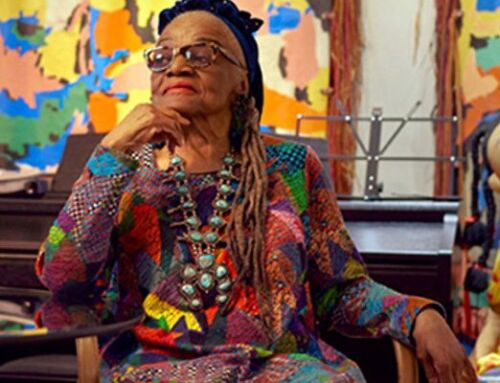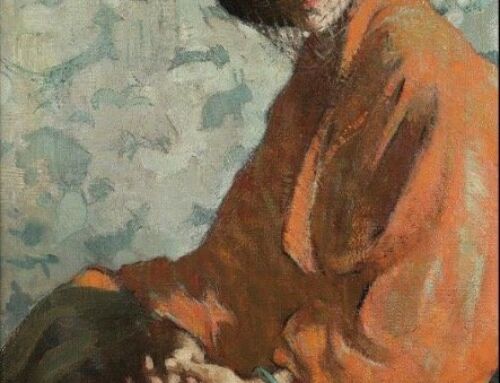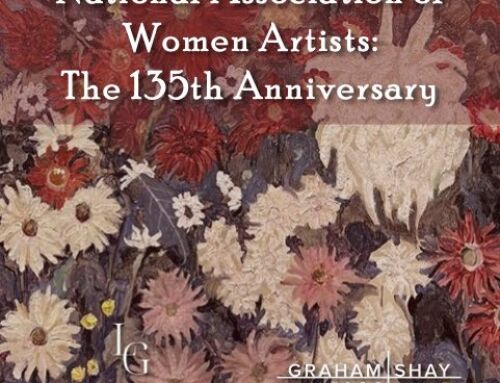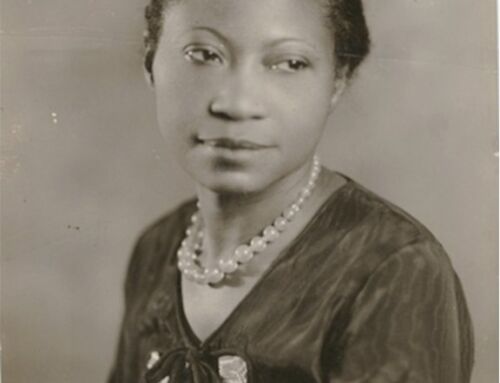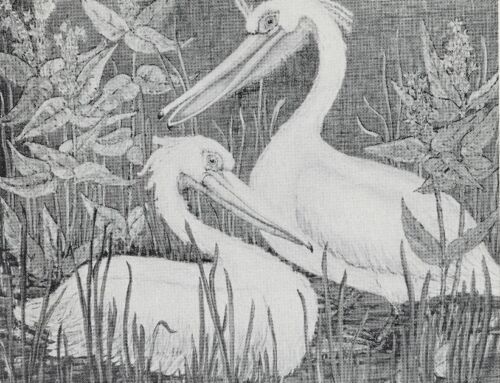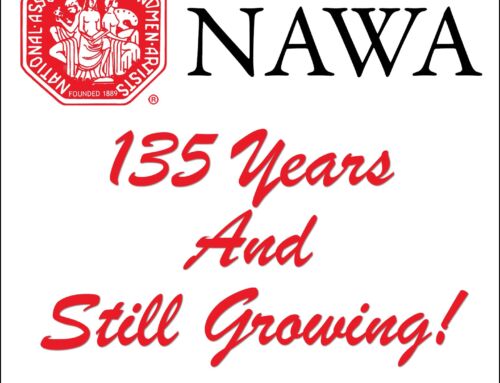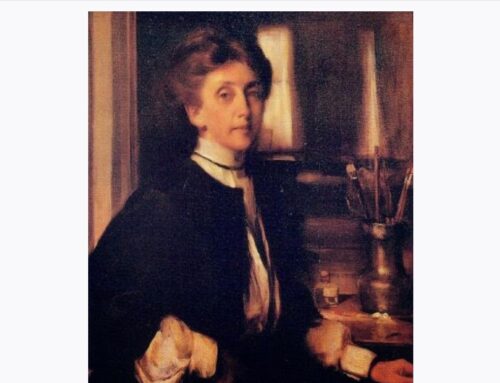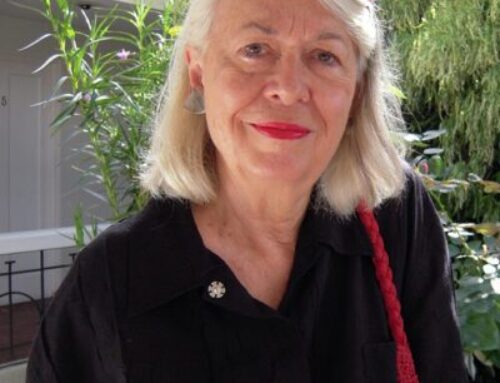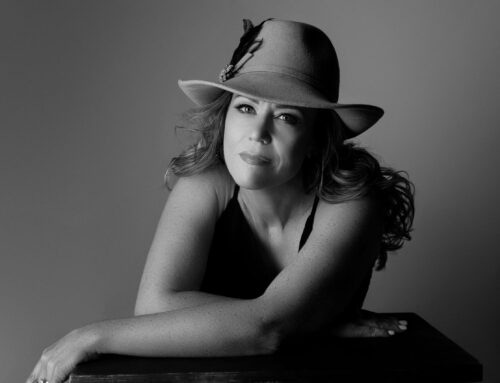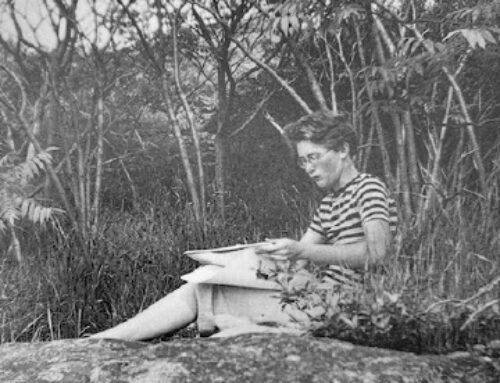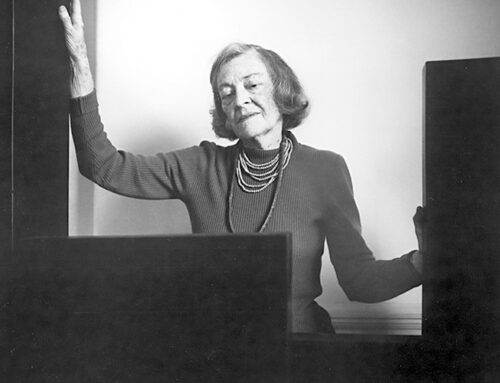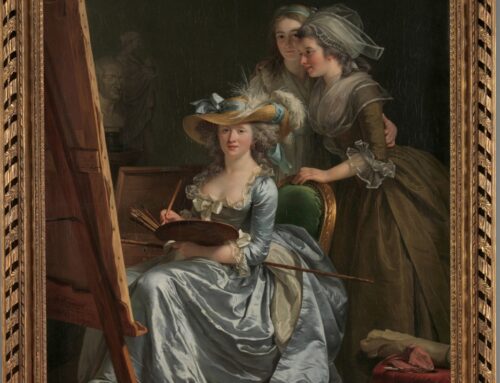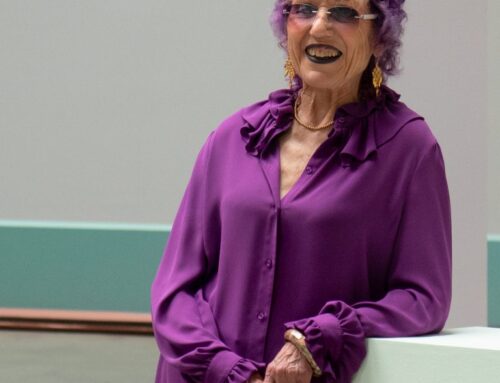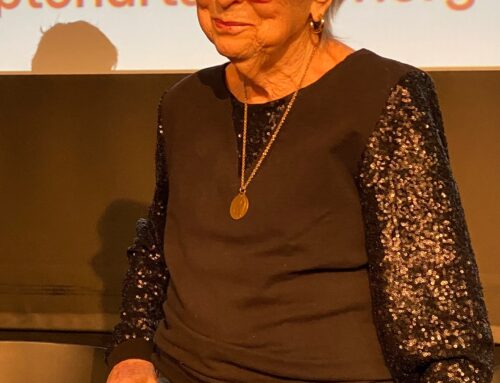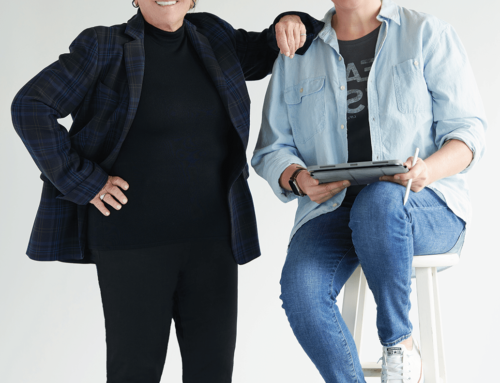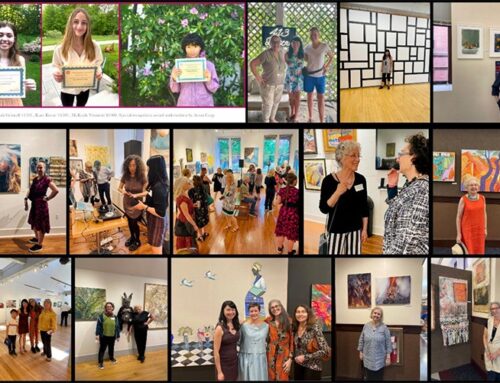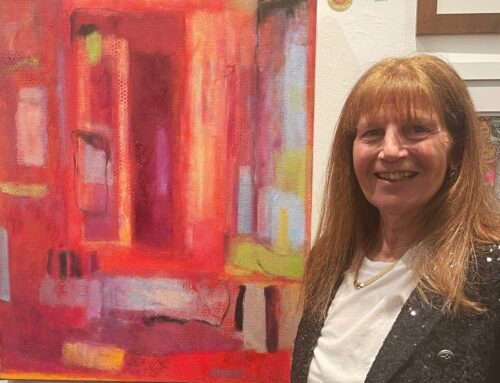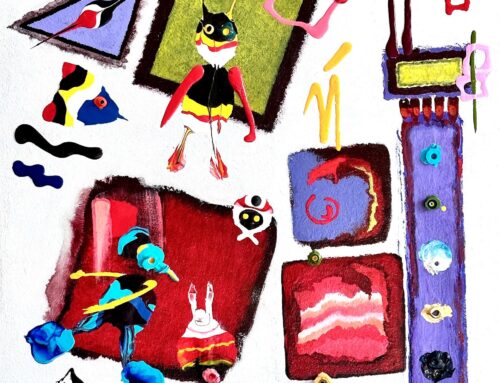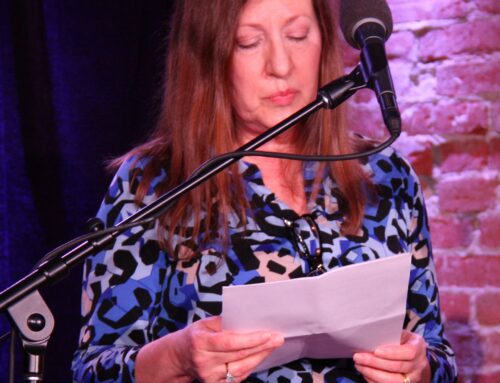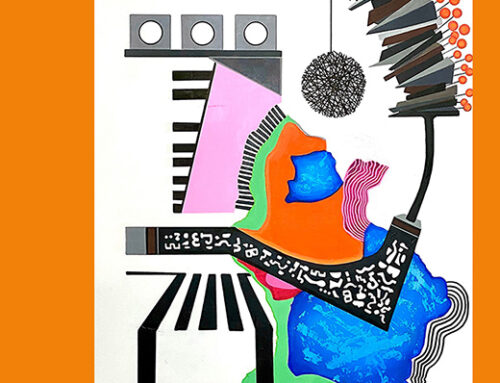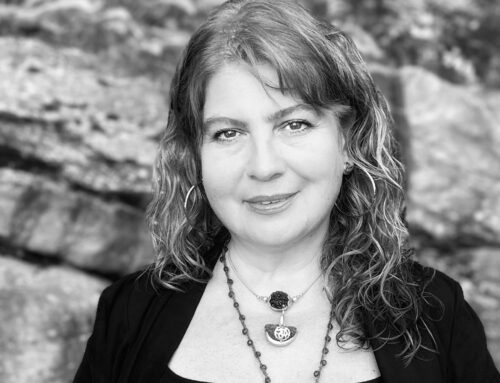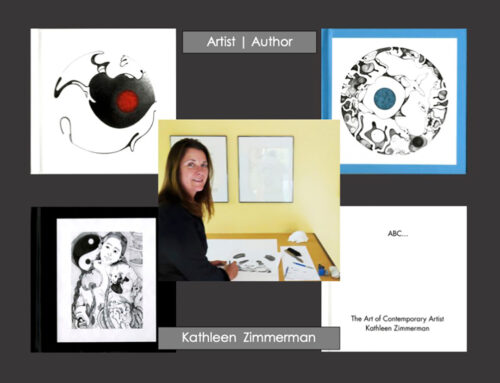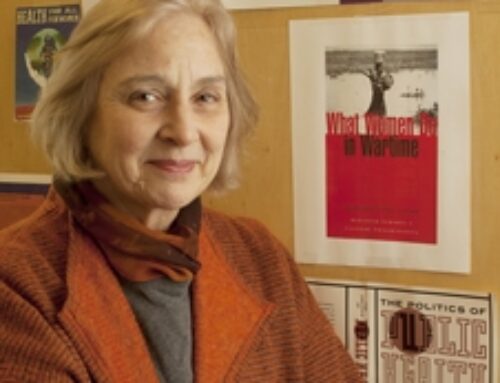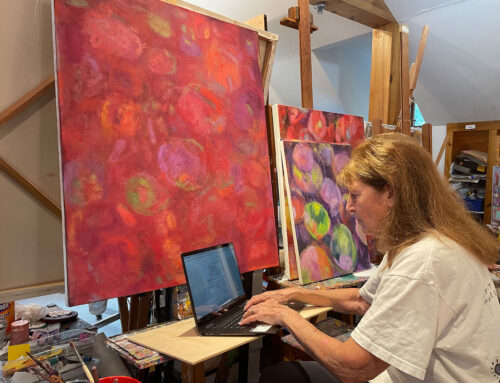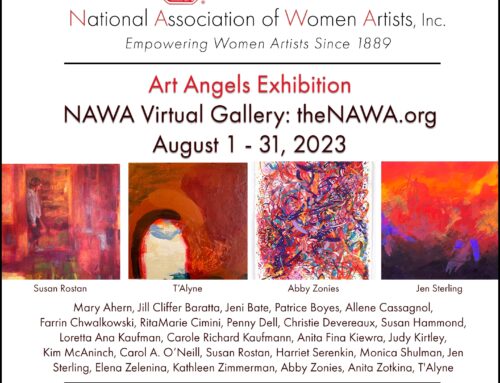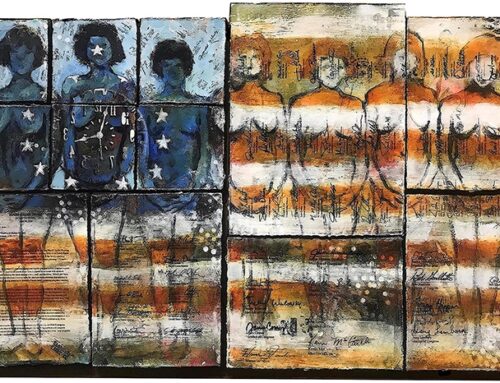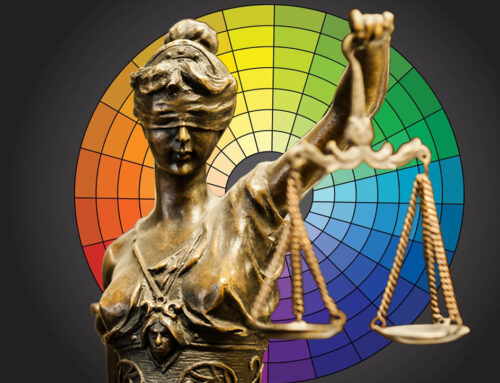NAWA Luminaries – Buffie Johnson
NAWA Luminaries is the intersection of NAWA’s Historical Research and current exhibitions around the United States highlighting celebrated NAWA members, brings you a short biography of Buffie Johnson. Johnson was one of the five NAWA members in the Heroines of the Abstract Expressionist Era: From The New York School to The Hamptons at the Southampton Arts Center in Southampton, New York closed on December 17, 2023. The works of the 35 artists in the show are part of the collection of Rick Friedman and Cindy Lou Wakefield and included paintings by Audrey Flack, Nell Blaine, Dorothy Dehner, Buffie Johnson, and Louise Nevelson, all NAWA Luminaries.

Buffie Johnson Participating in the Southampton College Festival of the Arts, April 1964
Buffie Johnson
Buffie Johnson was an American painter and NAWA member whose earliest works tended toward the Surrealists, followed by more abstract canvases of intense color and pure form associated with the New York School of abstract expressionists. Later, she turned to huge realistic paintings of flowers and other plant forms.
Born in New York City in 1912, she attended summer classes at the Art Students League, beginning in 1927, when she was fifteen, and continuing until 1928. Johnson attended UCLA and graduated with a B.F.A. in 1936. Her first solo show in 1937, at Jake Zeitlin Gallery in Los Angeles, was followed by travel to Paris, where she befriended Sonia Delaunay and received studio visits from Francis Picabia. Johnson had a solo show at Galerie André J. Rotgé in Paris in 1939 and studied at the Académie Julian and Stanley William Hayter’s Atelier 17. Returning to New York, she showed at Wakefield Gallery and Bookshop, then led by Betty Parsons.
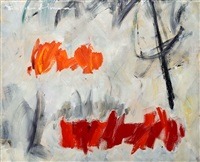
Buffie Johnson – Mist
In 1943, she was included in Peggy Guggenheim’s Exhibition by 31 Women at Art of This Century Gallery in New York, a significant experience that contributed to her awareness of the position of women in the male artistic environment. Her contribution to the exhibit was Dejeuner Sur Mer, a seascape with two women clinging to a wreck. Buffie Johson was so incensed by the sexism of an art critic who thought women should stick to having babies that she wrote an essay on women artists of the past and the insurmountable hurdles they faced. She could not find a publisher until 1997, when the Jackson Pollock-Lee Krasner House in East Hampton, Long Island, mounted a show commemorating “31 Women,” The catalog accompanying the show included Johnson’s article Women in Art (The Embattled Woman Artist). Her research into the history of female artists from ancient history to the 1940s revealed a lengthy list of restrictions on women’s artistic endeavors. In defense, Johnson sought to identify examples of worthy women artists throughout history, including contemporaries Meraud Guevara, Leonora Carrington, and Dorothea Tanning. Full of optimism from her research, suggesting she had captured the necessary as well as sufficient in her argument, Johnson ended her 1943 essay with:
“Now women are conquering every field and standing beside men. This is also
happening in painting. The young painters mentioned above are being borne along
on the great wave which carried women as well as men. From among these women
and the many thousands who will follow them will certainly come great women
painters who will be known, not as women painters, but simply as painters.”
The essay was a meaningful but little-known precedent to Linda Nochlin’s 1971 essay appearing in ArtNews, “Why Have There Been No Great Women Artists?” where Nochlin turns to the question of history’s patriarchal value system, expressly how art’s historical value is conferred. Still, in 2023, Katy Hessel was compelled to turn to Johnson’s perspective in The Story of Art Without Men.
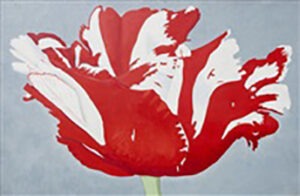
Buffie Johnson Meenakshi, 1978
In the late 1940s, Johnson traveled again to Europe, where she considered the environment more inclusive toward female artists. From 1946 to 1950, she taught at the Parsons School of Design, and her work appeared at the Whitney Biennial on multiple occasions. In New York in the 1940s and the 1950s in East Hampton and New York, Buffie Johnson exhibited with Jackson Pollock, Lee Krasner, Hans Hofmann, Mark Rothko, Adolph Gottlieb, and Robert Motherwell, among others. A close friend of Mark Rothko’s, she was interviewed about him by the Smithsonian for their oral history archives. In the 1950s, she took frequent European trips, lecturing for the U.S. State Department, exhibiting in Paris, and collecting images for a proposed book on the “Great Goddess and Her Sacred Animals.”
Johnson’s turn toward abstraction coincided with her friendship with architect and sculptor Tony Smith and her first show at Betty Parsons Gallery in 1950. That year, she married art critic Gerald Sykes and set up a studio in East Hampton, New York. In the 1960s and 1970s, she returned variously to representation, portraiture, and plant and flower imagery, and in 1961, Johnson became a member of NAWA. Residing in New York City in 1968, Johnson began painting her monumental plant images, moving entirely away from her abstract expressionist style to that of realism. Representing the sexual and the sacred, her plants and flowers become metaphors for life and fertility.

Buffie Johnson – The Triple Goddess 1975
In 1988, her longstanding interest in the history of goddess imagery and the Great Mother reflected in her paintings led to the publication of Lady of the Beasts: Ancient Images of the Goddess and Her Sacred Animals. A compilation of prehistoric representations of the goddess as sacred animals includes her drawings and textual interpretations summarizing the vast “Mistress of all Creation.” In her later years, she frequently showed at the Anita Shapolsky Gallery in New York. She was residing in New York when she passed in 2006.
In 2007, Buffie Johnson was posthumously given a Lifetime Achievement Award from the Women’s Caucus for Art of the College Art Association Committee on Women in the Arts.
Sources:
Conaty, Siobhán M., Pollack-Krasner House and Study Center, Peggy Guggenheim Collection, (1997). Art of this century: The women. The Stony Brook Foundation: The Solomon R. Guggenheim Foundation, New York.
Women of Abstract Expressionism, 2016, Yale University Press in association with the Denver Art Museum
https://www.berrycampbell.com/artist/Buffie_Johnson/info/
https://www.artnet.com/artists/buffie-johnson/biography
Susan M. Rostan, M.F.A , Ed.D. Co-Leader: NAWA Historical Research Team
Signature Member of the National Association of Women Artists
NAWA. Empowering Women Artists Since 1889



